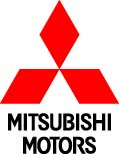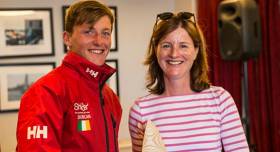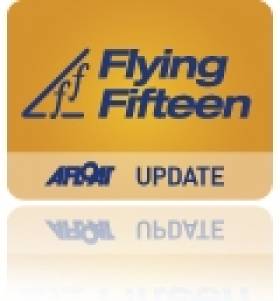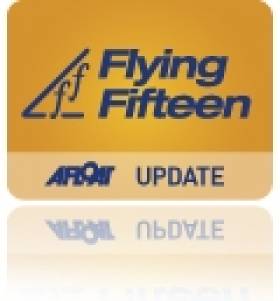Displaying items by tag: nyc
National Yacht Club Achievements in 2016 Include Cruising, Offshore, One Design & Dinghy Sailing Success
Dun Laoghaire's National Yacht Club gathered on Saturday to salute top club achievements from 2016. Ten annual awards for outstanding sailing were presented ranging from cruising endeavours to Olympic campaigns. There is no surprise that club member Annalise Murphy topped the awards with her Olympic Silver Medal being the defining moment of the Irish sailing year.
In cruising, The Township Cup went to Jim Gorman for his cruise to Norway. Marcus Higgins was awarded The Muglins Cup for his adventurous cruise on his Vega 27 thorugh the Canal du Midi to Sardinia.
In the offshore racing category, Brian and John Hall were awarded the Boyne Regatta Cup for their victory in the Scottish Series.
In one design racing, The O'Leary Cup went to Mick Leahy and John Power for their performance in the Beneteau 31.7 Levante in both DBSC and regattas in 2016.
View a slide show of the 2016 recipients by Joe Fallon below:
Laser Leinster Prizegiving at the National Yacht Club
Yesterday's Laser Leinster Championships at the National Yacht Club in Dun Laoghaire has started a two week period of Laser dinghy racing action on Dublin Bay in advance of next week's KBC Laser Radial World Championships.
Yesterday's prizegiving saluted winners in Standard, Radial and 4.7 divisions.
For a report and results click here.
National Yacht Club Takes Delivery of Sea Kayaks
Following the very positive feedback on its club paddle-boards last season, the National Yacht Club in Dun Laoghaire is carry-on diversifying its water sports activities and has taken delivery of nine RTM Ocean Duo sea-kayaks, thanks to the support of the Sport Capital Grant 2015 programme.
The RTM Ocean Duos are open but stable kayaks and can easily take two adults or even three people “on deck” with a child in the middle or three teenagers.
The sea-kayaks will join the NYC's existing and expanding fleet of Club sailing boats.
'Stolen' National Yacht Club Launch Wrecked in Gale
A much loved club launch belonging to the National Yacht Club in Dun Laoghaire has been wrecked in southerly gales on Dublin Bay. It follows the reported theft of the launch at the weekend that subsequently became the subject of a search and rescue operation when the vessel became entangled in lobster pots in nearby Scotsman's Bay.
The 20–foot boat that ferried club members to and from yacht moorings was wrecked at the back of the pier before the club could retrieve it.
Read our earlier story on the NYC launch rescue here
National Yacht Club to Lose Moorings in Front Of Club for 2016
Moorings in front of the National Yacht Club in Dun Laoghaire will be removed next season because of repair works being carried out on the East Pier's Number One berth.
According to an Afloat.ie source, Dun Laoghaire Harbour Company has told the club that a barge will 'operate from the south end of No. 2 berth (Carlisle Pier) and the East Pier and its track being through the existing moorings'.
The NYC has several mooring trots in this location and is used for a dozen or so small boats, RIBs and Ruffian 23 keelboats.
It is understood the moorings will be removed from June 2016 until sometime in 2017.
Time-lapse of National Yacht Club (NYC) Summer Lift–In of Yachts
#lift–in – A Time-lapse video by Declan Tonge of the morning's lift-in at the National Yacht Club (NYC) Dun Laoghaire last weekend, squashing 3.5 hours into just under 3 mins.
A mobile crane comes to the club at the start of the sailing season, and lifts all the boats off their cradles & trailers back into the sea so they can go back onto their harbour moorings for sailing over the Summer months.
The clip was shot between 07:10 - 10:45 on Saturday morning and made up of 4292 individual photos taken at 3-4 sec intervals.
Dun Laoghaire Flying Fifteens Announce Mitsubishi Motors Ireland as Fleet Sponsor
#flyingfifteen – One of Dublin Bay's most popular one design keelboat classes, the double handed Flying Fifteen, has been boosted with news of a new fleet sponsor for the upcoming 2015 season.
The Dun Laoghaire Flying Fifteen Fleet, which is mainly based in the National Yacht Club with over 25 registered boats, is delighted to announce that they are partnering with Mitsubishi Motors Ireland in what promises to be another exciting season.
Mitsubishi Motors Ireland is delighted to be on board as the fleet sponsor. Gerard Rice, Managing Director, says "Our new sponsorship of the Dun Laoghaire Flying Fifteen's fleet is an important partnership considering our heritage in the sailing community, who use our range of 4x4 vehicles for their reliability and superior performance".

The 2015 season is shaping up to be very busy with the class recently publishing its 2015 fixture list with events in Strangford Lough, Dunmore East, Dromineer and Antrim with the season's finale, the Mitsubishi Motors Championships of Ireland hosted by the National Yacht Club in September.
Dun Laoghaire to Dingle Race 2015 Launched by the National Yacht Club
#d2d – The National Yacht Club in Dun Laoghaire harbour has announced its 12th staging of the biennial Dingle Skellig Hotel Dun Laoghaire to Dingle Race which will start on Friday 12th June. It follows on a week from Howth Yacht Club's Lambay race so this time round it may be viewed with more interest by several more boats from across Dublin Bay too. The Notice of Race for the 2015 D2D is downloadable below.
For 2015, defending champion in the Dingle Race is Brian O'Sullivan of Tralee with the veteran Oyster 37 Amazing Grace, which came good in the end in 2013 with a new breeze which knocked pending leader Antix (Anthony O'Leary) off the winning perch.
The 2015 Dingle Race also acts as a useful if rather indirect feeder for the ICRA Nationals at the Sovereigns Cup in Kinsale from June 24th to 28th, there could be all sorts of sharp boats lining up to take the prize.
More in Afloat's 2015 sailing season preview by WM Nixon here.
The Notice of Race for the 2015 D2D is downloadable below as a pdf file.
Flying Fifteen 2015 Fixtures List Announced
#flyingfifteen – The Irish Flying Fifteen fixtures for 2015 has been announced for 2015. There are two events in Northern Ireland and two in the Republic with the premier event, the Championships of Ireland, confirmed for the National Yacht Club in Dun Laoghaire on September 11th.
There is no announcement yet on a return to Lough Derg's for the Freshwater Regatta in October. The Fifteens travelled to Dromineer for the first time in 2014 but came away with no races sailed after a drubbing at the Tipperary venue.
The full fixtures are as follows:
East Coast Championship, County Antrim YC, Whitehead, 16th-17th May
North Coast Championship, Strangford Lough SC, Whiterock, 13th-14th June
South Coast Championship, Wateford Harbour SC, Dunmore East, 4th-5th July
Championship of Ireland, NYC, Dun Laoghaire, 11th-12th-13th September
Fireball Duo McCartin & Kinsella Make A Clean Sweep on Dublin Bay
#fireball – With a forecast of rising wind strengths for the day, which did manifest themselves, IRO Jack Roy and his team set three Windward-Leeward races for the Irish Fireball fleet to close out the regatta season for 2014 writes Cormac Bradley.
Barry McCartin & Conor Kinsella won two of these to allow them to retire from the last race of the day without compromising their march to a clean sweep of regatta wins in the 2014 season.
The consistency of Noel Butler & Stephen Oram (15061) on this second day, with three second places was enough to secure 2nd place overall, ahead of Kenneth Rumball & Finn Bradley (15058), even though the latter combination won the last race of the day.
Behind Rumball & Bradley were the Clancy Brothers, Conor & Jame (14807), followed by another family combination, father and son Michael & James Murphy (14904).
Windwise, this was the exception to the 2014 rule with strong wind on both days. Results wise, the 2014 rule is unbroken with a fifth regatta win for Barry McCartin & Conor Kinsella (15114). They won two of the day's three races to be able to retire from the final race without compromising their first place.
The second most consistent combination of the weekend, Messrs Butler & Oram (15061), "banged in" three second places on day 2 of the regatta to consolidate 2nd place overall ahead of Kenneth Rumball & Finn Bradley (15058) who though they won the last race also scored a three and a four.
The Clancy brothers, Conor and James (15807), put up identical scores on both days, 3,4, 4 to secure fourth place. In fifth place was another family combination - father and son Michael & James Murphy. An OCS was their discard fro a scorecard that boasted a 3, 4,, 5 and 2 x 6ths.
Next up were Neil Colin and Margaret Casey (30pts) followed by Niall McGrotty & Neil Cramer (34pts).
1. B Mc Cartin & Conor Kinsella 7pts
2. N Butler & S Oram 9pts
3. K Rumball & F Bradley 12pts
4. C & J Clancy 18pts
5. M & J Murphy 24pts.
Winds for racing were of the order of 12 - 15 knots but with an adverse forecast sailing was finished promptly. When this correspondent passed the seafront at 15:30, there was no sailing activity on Dublin Bay.
The Irish Fireball season now changes from regatta mode to the Sunday Frostbites but only after a break of a few weeks. This regatta saw a number of new combinations on the water which is very encouraging.
At the AGM on Saturday night an embryonic fixture list was discussed with differing views on the date and venue for the Nationals. There was also confirmation that the practice of sharing venues with other classes will contiinue to be pursued in 2015.
The Class prize-giving will take place at the end of November.




























































